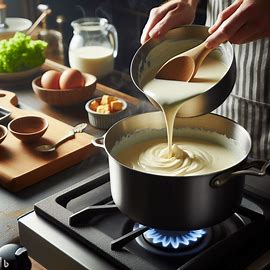Food Basics and Kitchen Essentials: What You Actually Need To Cook Well
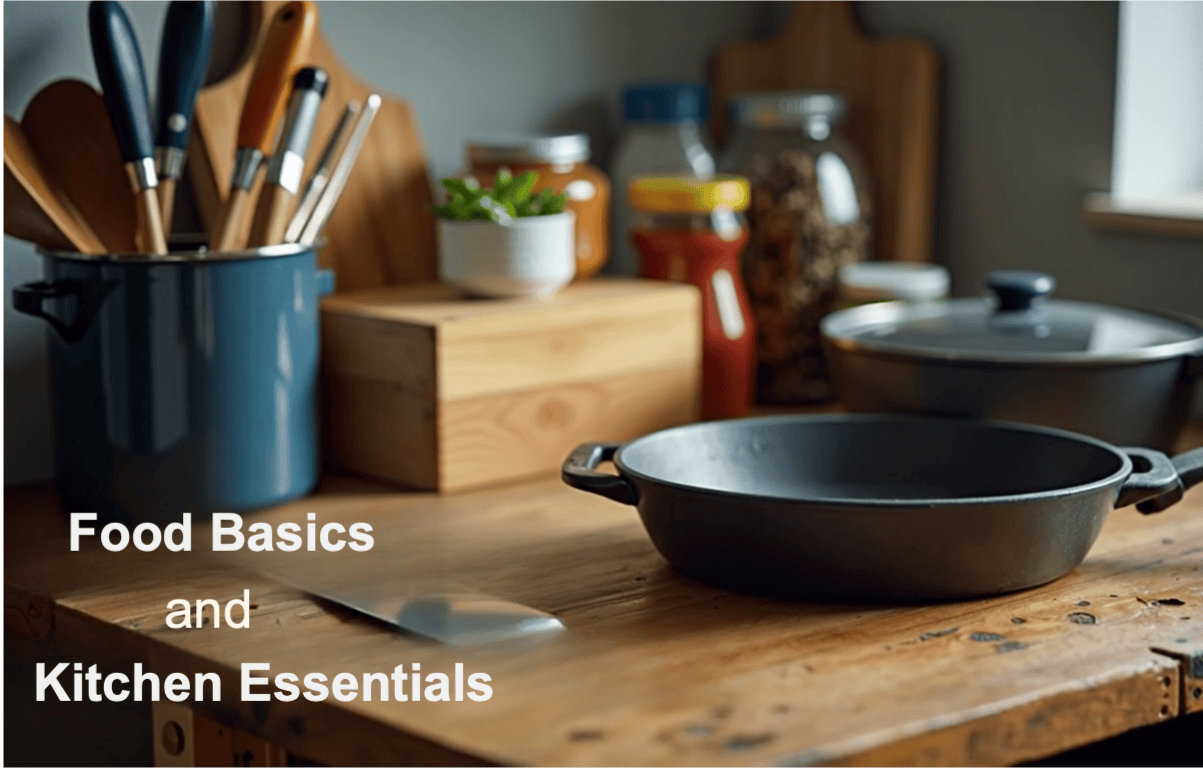
Are you tired of recipes calling for equipment you don’t own or ingredients you can’t find? Let’s talk about food basics and kitchen essentials that make cooking easier. Having the right tools and ingredients doesn’t have to be complicated – I’ll show you exactly what to add to your cart to create a well-stocked kitchen.
Why Food Basics and Kitchen Essentials Matter

Having the right food basics in your kitchen isn’t just about following recipes – it’s about making cooking easier when you’re tired and hungry. When you stock your kitchen with food basics, you create a foundation that makes any meal possible. Think of these basics as your cooking insurance policy.
When I first started cooking regularly, I had no idea what I needed to have, or how to use the things I did have. I had no idea what all the spices in that spice rack we were gifted were for. I found I never had the ingredients I actually needed to cook on hand when I started to cook. It really made cooking meals unpleasant. Going to the store, I had to figure out every single ingredient I had to buy for every meal.
It turns out that once you get some basics, everything goes much smoother. Here’s what to add to your cart the next time you shop for food basics – items that actually work together to make cooking easier.
Kitchen Equipment You’ll Actually Use
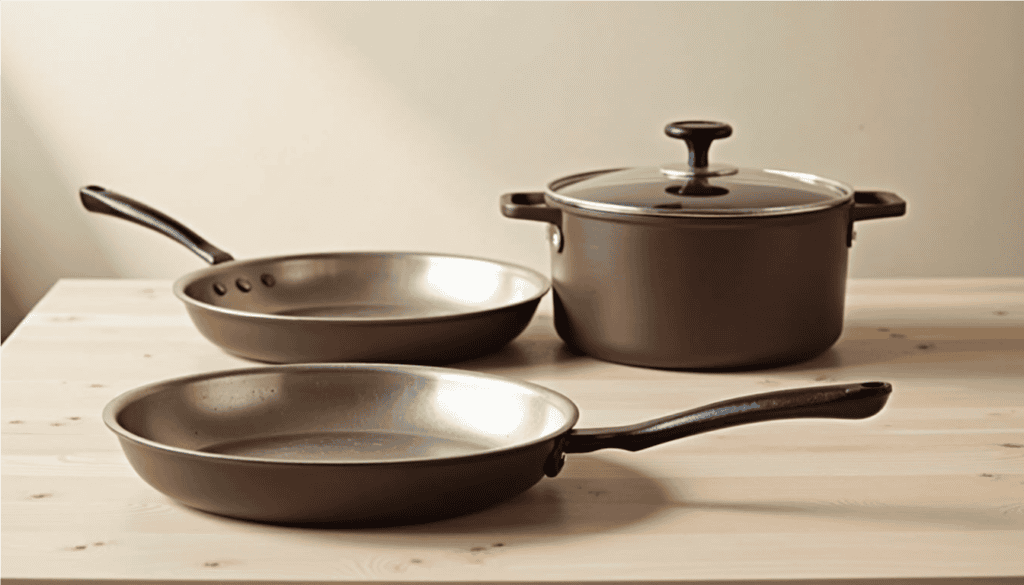
Heat Control: Your Basic Cooking Vessels
You need exactly three pans to cook most foods:
- 12-inch stainless steel skillet – This is your workhorse at 350-450°F for everything from chicken thighs to caramelized onions. Add this to your cart first – you’ll use this pan constantly.
- 10-inch non-stick skillet – For delicate foods at 325-375°F. Here’s the truth: non-stick isn’t forever. Every food basics store stocks these – shop for a midrange option and plan to replace it every 2-3 years.
- 5-quart Dutch oven – For anything low and slow at 250-325°F. You can find these online or in store, and they’re worth the investment for how much you’ll use them to stock your freezer with soups and stews.
These three items create the foundation of your kitchen – every food basics store carries some version of these essential products. Visit the public demo area in many food basics stores to see how these pans perform before you buy.
Here at Chow Time Fellers, we favor cast iron cookware for most of our cooking. It’s incredibly durable, develops a natural non-stick surface with proper care, and holds heat like nothing else. Pa always jokes that our collection of cast iron skillets and Dutch ovens will be the kids’ inheritance someday – and he’s only half kidding! If you’re looking to add one piece of cast iron to your cart, start with a 10-inch skillet – it’ll last generations if you treat it right.
The Knives You’ll Use Every Day

If you don’t have one of those massive knife sets, add these three to your cart:
- 8-inch chef’s knife – This handles 90% of your cutting needs. You’ll use this for everything from dicing onions to breaking down meats.
- Paring knife – For precision work like removing seeds or detailed cutting. Most food basics stores carry affordable options.
- Serrated bread knife – Not just for bread! Use this for slicing tomatoes, cakes, and more.
- Steak knives – A set of 4-6 good steak knives is worth adding to your cart. They’re not just for steak – they’re perfect for any protein that needs a bit more cutting at the table. Look for ones with serrated edges that stay sharp longer.
An alternative is to pick up one of those cheaper knife blocks that includes all these basics. Many food basics stores carry starter knife sets in the $30-50 range. While they won’t be top-quality, they’re completely fine for getting started and let you add everything to your cart at once. You can always upgrade individual knives later as you figure out which ones you use most.
Sharp knives make cooking easier and safer. You can find sharpening services online or at many store locations. A $15 knife that’s properly sharpened is better than a dull $150 knife. Many home cooks change their entire cooking experience just by learning to use and maintain these basic tools.
Want to get the most out of your knives? Check out my article “Level Up Your Knife Skills for Cooking: Slice, Dice, and Chop Like You Mean It” where I break down the techniques that transformed my own cooking speed and confidence. Learning proper knife skills is probably the single biggest game-changer in making cooking more enjoyable.
Measuring Tools and Kitchen Utensils You’ll Use Constantly

Accuracy matters, especially when baking. Add these to your cart:
- Measuring cups (dry and liquid separate) – They measure differently. Shop for both types to use in different recipes.
- Measuring spoons – Get a set that includes the 1/4 teaspoon – you’ll use it for spices and baking.
- Digital food scale – This $20 tool transforms your cooking accuracy. Most food basics stores now stock these, or shop online for more options.
- Instant-read thermometer – Use this for meats and baking. Your chicken needs to hit 165°F for food safety, but your steak is perfectly medium-rare at 135°F.
You’ll also need basic mixing and stirring utensils:
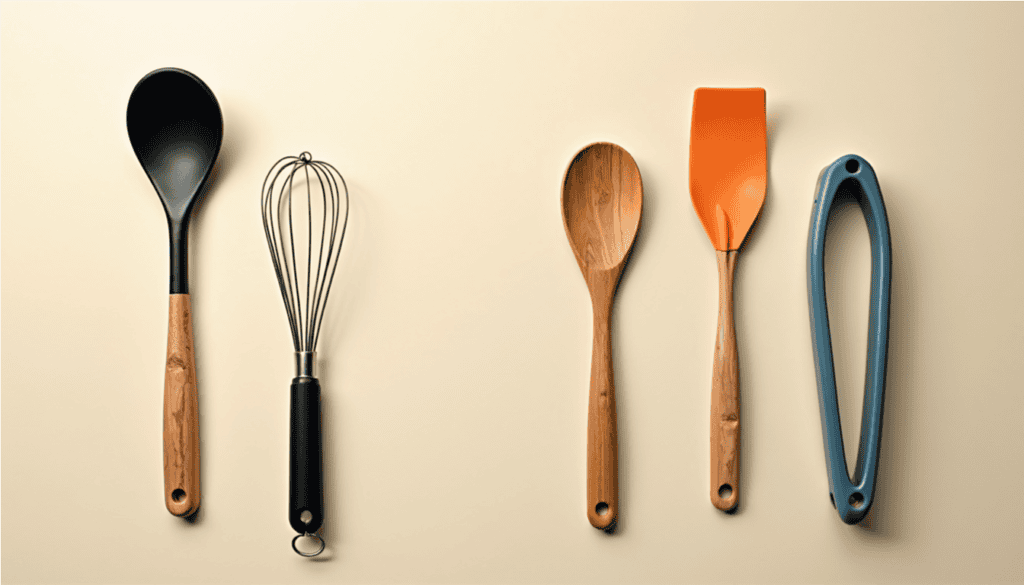
- Wooden spoons – Nothing beats wood for stirring without scratching your pans. Get a few different sizes.
- Silicone spatula – Perfect for scraping every bit of batter from the bowl or getting all the sauce out of the pan.
- Whisk – Essential for everything from scrambling eggs to mixing batters and sauces.
- Tongs – Like an extension of your fingers – you’ll use these constantly for flipping, turning, and serving.
Most food basics stores have an entire aisle dedicated to these tools. Look for sturdy construction that will hold up to daily use – these are items you’ll reach for constantly.
Food Basics to Stock Your Pantry
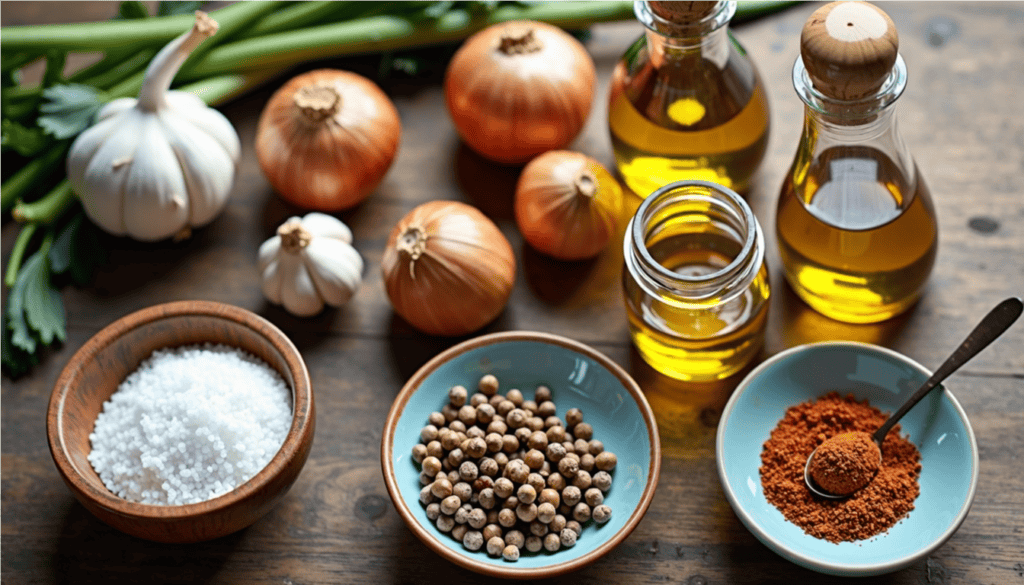
Flavor Foundations
Here’s what to add to your cart to build flavor in everything you cook:
- Kosher salt – Not table salt! The larger crystals give you better control. You’ll use this in every savory dish you make.
- Black peppercorns + grinder – Pre-ground pepper loses flavor quickly. Food basics stores usually stock whole peppercorns – use them for fresher flavor.
- Cooking oils – Add two kinds to your cart: extra virgin olive oil for lower-heat cooking and a neutral high-heat oil like grapeseed or avocado oil. You’ll use these daily.
- Aromatics – Garlic, onions, and shallots are found in every food basics store. Stock up on these – you’ll add them to almost everything you cook.
- Spice blends – Here at Chow Time Fellers, we use Cajun seasoning all the time. It’s that perfect blend of paprika, garlic, onion, oregano, and cayenne that adds depth to everything from scrambled eggs to roasted chicken. A good all-purpose spice blend saves you from buying 10 different spices when you’re just starting out. Most food basics stores carry several options – find one that speaks to your taste.
Acids That Make Food Pop

Every food basics store carries these items that make your cooking taste better:
- Vinegars – Add red wine vinegar, rice vinegar, and apple cider vinegar to your cart. You’ll use these to add brightness to dressings and sauces.
- Citrus – Fresh lemons and limes. The zest contains aromatic oils while the juice adds brightness. Use both in your cooking.
Shelf-Stable Food Basics
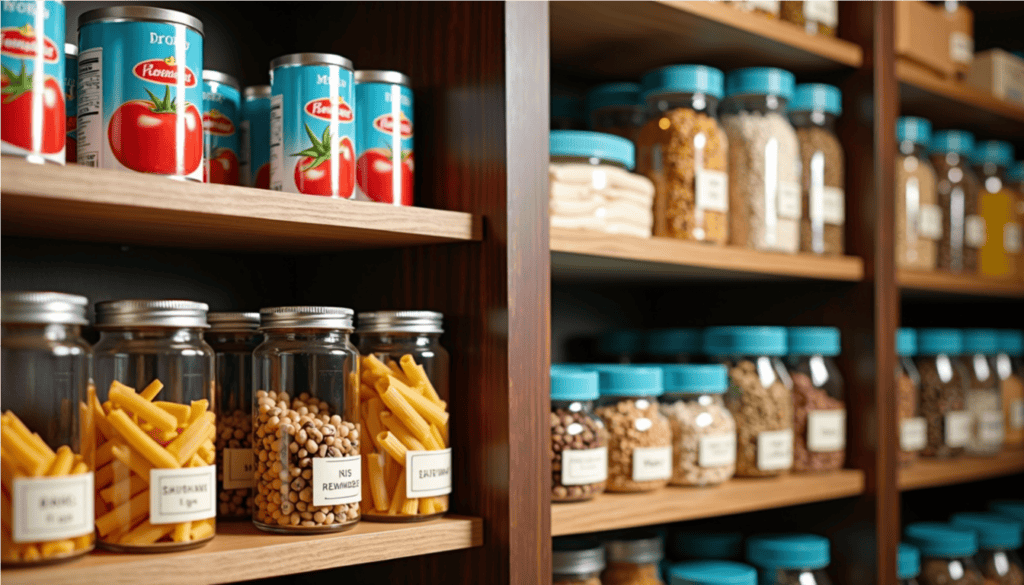
These food basics extend your cooking options without frequent shopping:
- Canned tomatoes – Add whole peeled tomatoes to your cart; you can always break them down. Most food basics stores carry multiple brands.
- Chicken/vegetable stock – Essential for soups and sauces. Shop for low-sodium options to control the salt yourself.
- Dried pasta – A perfect food basics staple. Bronze-cut pasta has a rougher texture that holds sauce better. You’ll use this for quick weeknight meals.
- Rice and other grains – Stock up on these food basics that keep for months. Every food basics store carries multiple options.
- Beans – Both canned (for immediate use) and dried (more economical). Use these to add protein and fiber to meals.
- Nuts and seeds – This one is only if you choose to eat these on a regular basis. Find these in most food basics stores. Store them in the freezer to prevent rancidity.
Online Shopping and Account Benefits

Can’t get to a food basics store? Don’t worry – shopping online for food basics is easier than ever:
- Most food basics stores now offer online ordering with home delivery
- You can add all your kitchen essentials to your cart in one session
- Many online stores offer free shipping with minimum purchase
- Compare prices easily when you shop online
Don’t want to wait for delivery? Most places (including Walmart and many food basics stores) now offer curbside pickup services. You can order all your food basics online, then drive up to the designated pickup slots at the store, and they’ll bring your order right out to your car. It’s the perfect blend of online convenience and immediate pickup. Some stores even let you order meat cut to your specifications and have it ready for pickup the same day.
Create an account with your favorite food basics stores to access these benefits:
- Log your favorite products for faster reordering
- Track your order history and receipts
- Receive free shipping on orders over a certain amount
- Get email notifications when your frequently purchased items go on sale
- Access exclusive account-holder discounts
Many food basics stores also offer a free app that helps you add items to your cart while planning meals. Log in to your account on the app to see personalized recommendations based on your shopping history.
In-Store Experience at Food Basics Stores
Most food basics stores are open daily with extended hours for convenient shopping. Here’s what you’ll find in a typical food basics store:
- Organized aisles that make it easy to add items to your cart
- Knowledgeable staff to help you find products
- A butcher counter where you can order specific cuts of meat
- A cafe area where you can rest and enjoy coffee while you shop
- Public cooking demonstrations using products found in store
- Free samples of new products to try before you buy
Some food basics stores even have a public kitchen space where they hold cooking classes. These classes help people learn to use basic ingredients in creative ways. Check store information for the schedule of these events.
Using Your Food Basics Together
Think of your kitchen basics like a team. Your equipment provides the cooking surface, and your ingredients are the players. Here’s how to use these food basics together:
Quick weeknight pasta: Sweat garlic and onions in olive oil, add canned tomatoes, simmer while your pasta boils. You’ll use pantry staples to create a delicious meal in under 30 minutes.
Simple roast chicken: Season chicken with salt and pepper, roast at 425°F until breast meat hits 160°F and thighs reach 175°F. Add some vegetables to the pan for a complete meal.
Basic stir-fry: Use your hot pan (450°F), add oil, then quickly cook thinly sliced meats and vegetables. Having food basics in your pantry means you can create this meal anytime.
These techniques work with whatever food basics you have on hand. The more you use these methods, the more comfortable you’ll become in the kitchen.
Expanding Your Food Basics
Once you’re comfortable with the essentials, you can add more specialized tools and ingredients:
- If you make lots of soups, add an immersion blender to your cart
- If you bake frequently, shop for a stand mixer
- If you love stir-fries, a wok changes everything
Many food basics stores carry these items, or you can shop online for more options. But remember – you don’t need these to cook great food. Start with the basics, master them, and add only what serves your cooking style.
Health Benefits of Cooking with Food Basics
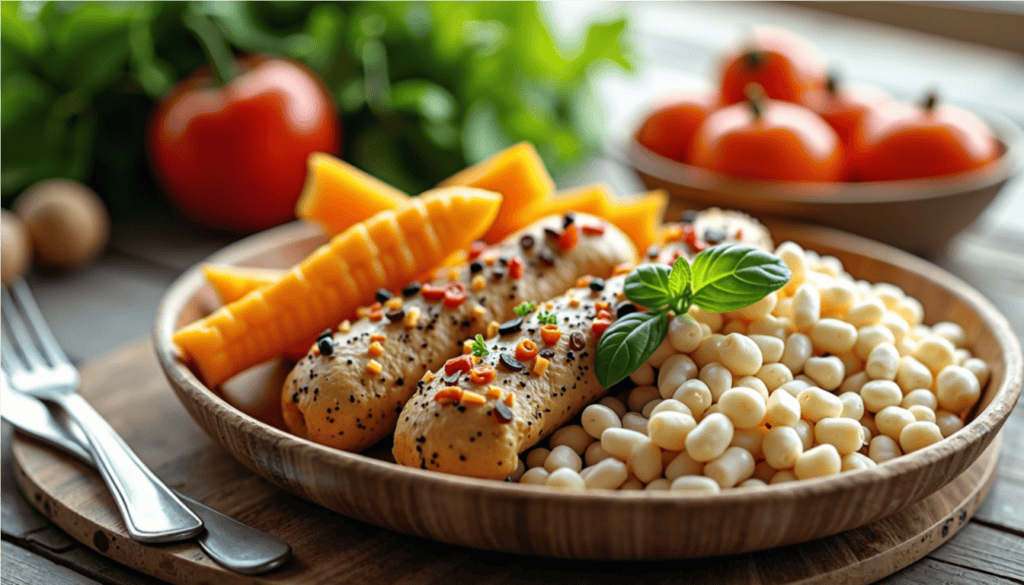
Cooking at home with food basics offers significant health benefits:
- You control the ingredients, reducing excess salt, sugar, and unhealthy fats
- Fresh meats and produce provide more nutrients than processed foods
- Home cooking is associated with healthier overall diets
Public health information consistently shows that people who cook at home with basics food tend to eat healthier meals. Many food basics stores now highlight health information on product labels to help you make informed choices.
Money-Saving Tips for Food Basics Shopping

Smart shopping for food basics can save you money:
- Make a list before you shop to avoid impulse purchases
- Compare prices online and in store for the best deals
- Use food basics store loyalty programs and digital coupons
- Stock up on non-perishable items when they’re on sale
- Check your account for personalized discounts
- Order in bulk when prices are low
Many food basics stores don’t charge taxes on essential food items, which helps you save even more. Some stores offer free delivery when your cart exceeds a minimum purchase amount.
The Food Basics Store Shopping Experience
Shopping for food basics should be enjoyable. Here’s how to make the most of your food basics store visit:
- Create an account for a personalized shopping experience
- Log in to the store app to access your shopping list
- Add items to your cart as you browse the store
- Visit the cafe for a quick refreshment break
- Order custom meats from the butcher counter
- Use the self-checkout for faster service
- Check the public bulletin board for upcoming store events
Food basics stores often change their layout seasonally to highlight different products. If you can’t find what you need, ask a staff member to help – they can often order special items for you.
Food Basics for Every Home Cook
Don’t let anyone convince you that you need fancy gadgets to cook great food. People have been cooking amazing meals with basic tools for centuries. When you shop for food basics and learn to use them well, you’ll create delicious meals without the unnecessary expense.
The food basics products I’ve described give you the foundation to create countless healthy meals at home. By learning to use these items well, you’ll save money compared to eating out and open up a world of cooking possibilities.
What kitchen basics have been most valuable in your cooking journey? Log in and add a comment below – I’d love to hear what’s been game-changing in your kitchen!

Frequently Asked Questions
What exactly are “food basics” for a home kitchen?
Food basics are the essential ingredients and tools that form the foundation of home cooking. These include versatile staples like olive oil, kosher salt, and basic pots and pans that you’ll use constantly. Having these basics in your kitchen means you can cook a wide variety of meals without running to the store for every recipe.
What’s the bare minimum kitchen equipment I need to get started?
If you’re starting from scratch, focus on these absolute essentials: a chef’s knife, a cutting board, a 12-inch skillet, a saucepan, measuring cups/spoons, and a wooden spoon. With just these basics, you can cook most simple meals. Add items to your cart gradually as you discover what you actually use.
How can I stock my pantry effectively without spending a fortune?
Start with the highest-impact basics food items first: kosher salt, cooking oil, canned tomatoes, dried pasta, rice, and your favorite spice blend. Add to your stock gradually, focusing on versatile ingredients you’ll use in multiple recipes. Many food basics stores offer store brands that provide good quality at lower prices.
What are the health benefits of cooking with basic foods at home?
Cooking at home with basic foods lets you control exactly what goes into your meals. You can reduce salt, sugar, and unhealthy fats while increasing nutrients. Public health information consistently shows that people who regularly cook with basic ingredients tend to eat more balanced diets and have better overall health outcomes.
How can I save money while shopping for kitchen basics?
Create an account with your favorite store to access digital coupons and rewards. Shop sales for non-perishable items you use regularly and stock up. Compare prices per unit rather than package price. Order in bulk for pantry staples with long shelf lives. Use store loyalty programs and check if stores offer free delivery when your cart exceeds a minimum amount.
What’s the best way to learn basic cooking techniques?
The best way to learn is through practice, but you can accelerate your learning by watching cooking demonstrations online or in public spaces at food basics stores. Log into cooking websites for free tutorials, and don’t be afraid to start with simple recipes. Focusing on technique rather than complicated ingredients helps build confidence in the kitchen.

